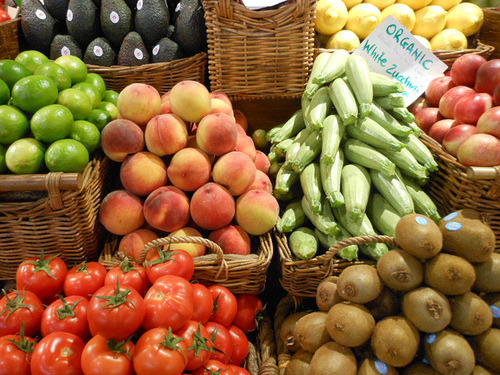You are what you eat, but increasingly you need to be aware of where your food has come from and how far it has traveled to be on your plate.

1) Go organic where you can
It’s a booming area of agriculture. Some sneer that it’s as much about status as health, as often organic varieties can be more expensive than their non-organic versions.
However the condition of arable land certainly benefits with the reduction in the use of chemical fertilizers and pesticides.
Learn more about organic food.
2) Buy more local produce
By buying locally grown produce you cut down the amount of CO2 created in food transportation and minimize the “food miles” in you shopping basket.
If it’s local it also means it’s is more likely to be seasonal and will not have grown in overly artificial conditions.
Learn more about food production.
3) Don’t eat endangered species of fish
The pressures on the world’s fish stocks come from pollution, over-fishing and by-catch. By being selective in what fish you eat and how often you consume it you can help to preserve existing stock and species.
Try and avoid fish caught by bottom trawling, the most destructive method of fishing.
Learn more about endangered fish stocks and global fishing.
4) Compost your food waste
Don’t just bin it; creating your own compost can benefit your garden much better than fertilizers. Even if you don’t have a garden or even a flower box, some local authorities will collect organic waste as part of their recycling programs.
5) Buy minimally packaged goods
These days packaging is almost as important as the product itself. While necessary for many items, it can be avoided easily for others such as fruit and vegetables.
Via Tumblr http://innovativegreenliving.tumblr.com/post/42494405000
No comments:
Post a Comment